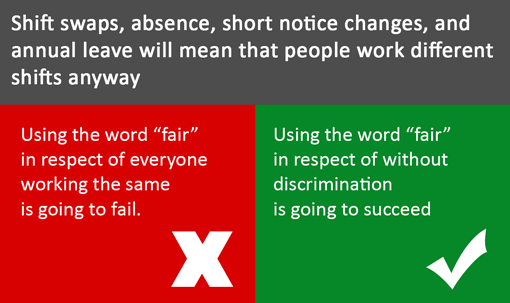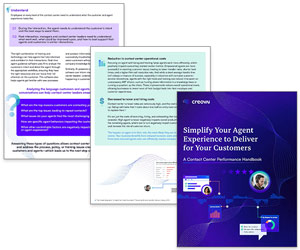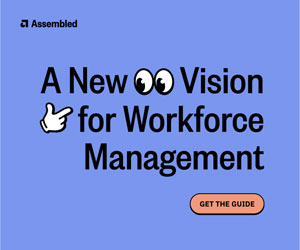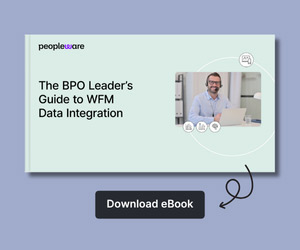Fairness is a term that comes up frequently in contact centres. But what does it actually mean in practice?
The definition of fairness is treating people equally, without favouritism or discrimination.
However, in a customer contact environment with varied shift patterns and operational demands, achieving fairness can be complex.
To find out more, we asked Dave Vernon, The Forum, to outline how companies can avoid the ‘fairness trap’ that can arise when creating schedules
Video: Avoiding the Fairness Trap When Creating Schedules
Watch the video below to hear Dave explain how companies can avoid the ‘fairness trap’ when creating schedules:
With thanks to Dave Vernon, The Forum, for contributing to this video.
This video was recorded when Dave was a panellist on our 2022 webinar ‘How to Build Flexibility into Call Centre Schedules‘
What Is Fairness?
The definition of “fair” is treating people equally, without favouritism or discrimination.
“Fairness. This is something that’s mentioned massively across most organizations and contact centres. It’s not uncommon for the word “fair” to be used at some point, as someone will point out the importance of fairness.
First let’s look at the definition of fairness. The definition of “fair” is treating people equally without favouritism or discrimination.”
However, in a customer contact environment with varied shift patterns and operational demands, achieving fairness can be complex.
The Fairness Trap
Many contact centres aim for fairness by applying one-size-fits-all shift patterns, assuming that rotational schedules evenly distribute the ‘good’ and ‘bad’ shifts.
But in reality, factors like shift swaps, absences, and annual leave mean that not everyone works the same hours, as Dave explains:
“It is rare for a customer contact operation to find a one-size-fi–all working pattern, or approach, when there are many people required to cover a range of operating hours and customer demand.
A single shift pattern or rotation is likely to have limitations. Though the idea of work in a rotational pattern is that everyone works the same shifts, therefore sharing the perceived good and the bad shifts, the reality is that shift swaps, absence, short notice changes, and annual leave will mean that people work different shifts anyway.”
So, if fairness is based solely on treating everyone the same, this approach will likely fail. Instead, fairness should be about avoiding discrimination and ensuring equity, rather than forcing uniformity.
Defining Fairness in Workforce Planning
To create a truly fair system, organisations must clearly define what fairness means in their workforce strategy.

“Therefore, using the word “fair” in respect of everyone working the same is going to fail.
Using the word “fair” in respect of without discrimination is going to succeed. It is really important to define what you mean by fairness, and how your working patterns and workforce strategy work.”
Some key considerations include:
Avoiding Unnecessary Comparisons
If some staff perceive others as having better schedules, it can create resentment, even if the system is designed to be fair.
“People will compare themselves to others, and if it is perceived that some people have a benefit, this will create an unnecessary problem.”
Recognising Individual Needs
Employees have different personal circumstances that should be acknowledged in scheduling.
“But recognizing everyone as an individual, with individual needs, allows people to identify with their tailored working pattern without boundaries or limits.”
Flexibility Within Structure
A balance between contact centre needs and employee preferences can lead to better engagement and retention
A More Effective Approach
Rather than aiming for identical treatment, fairness in contact centres should be about equity – ensuring that schedules and policies work without discrimination and allow all employees to contribute effectively within their own circumstances.
If you are looking for more great insights from the experts, check out these next:
- An Introduction to The CX Chain
- Key Steps to Design for Sentiment
- How to Decide Who Should Record IVR Messages
- Defining a Customer Experience (CX) Code
Author: Robyn Coppell
Reviewed by: Hannah Swankie
Published On: 18th Oct 2022 - Last modified: 12th Jun 2025
Read more about - Video, Dave Vernon, Employee Engagement, Scheduling, Staffing, Videos, Workforce Management (WFM)




















